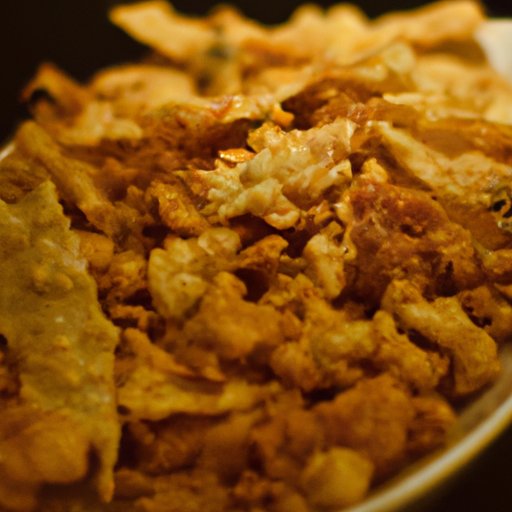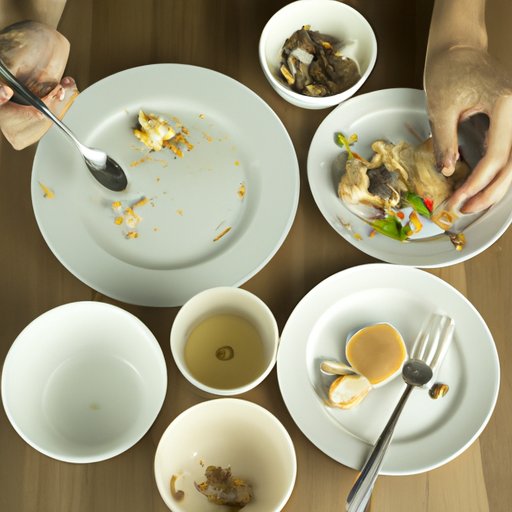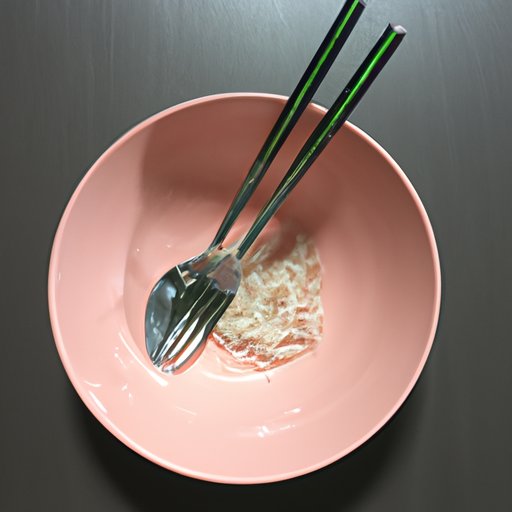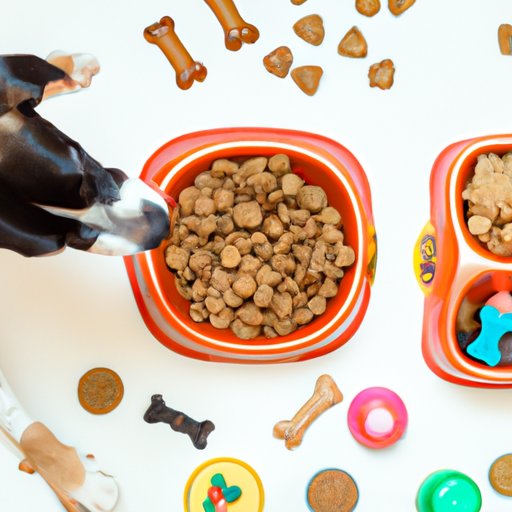Introduction
If you have ever watched your dog gobble up their food in just a few minutes, then you know how important it is to help them slow down their eating. Eating too fast can lead to a variety of health problems for your pup, including bloating, vomiting, and even choking. That’s why it’s essential to take steps to help your canine companion eat slower.
But what exactly does “eating too fast” mean? Eating too fast is defined as when a dog consumes their entire meal in less than 10 minutes. This can be a sign that the dog is either not getting enough nutrition from their meals, or that they are eating too much too quickly. Both of these scenarios can lead to serious health issues, so it’s important to slow your pup down when they’re eating.
Provide Smaller Portions at Meal Times
One of the easiest ways to slow down your dog’s eating is to provide smaller portions at meal times. When a dog has a large amount of food in front of them, they will naturally eat faster in order to get through it all. By providing smaller portions, you can help reduce the amount of time it takes for them to finish their meal.
It’s also important to make sure you are providing the right portion size for your dog. The best way to determine this is to talk to your vet about your pup’s size, breed, age, and activity level. They can help you determine the right portion size for your pup so that they are getting the right amount of nutrition without overeating.
Use a Slow-Feeder Bowl or Puzzle Feeder
Another great way to slow down your pup’s eating is to use a slow-feeder bowl or puzzle feeder. These types of bowls and feeders are designed to slow down the eating process by making it more difficult for your pup to access their food. The idea is that it will take them longer to get through the meal, which will reduce the risk of them eating too quickly.
There are a variety of slow-feeders and puzzle feeders available on the market. Some of the most popular options include raised feeders, maze feeders, and interactive feeders. Each type of feeder has its own benefits, so you’ll want to do some research to find the best one for your pup.
Break Up Larger Pieces of Food into Smaller, Bite-Size Pieces
If you are feeding your pup larger pieces of food, such as kibble, then it’s important to break them up into smaller, bite-size pieces. This will help slow down the eating process, since your pup won’t be able to swallow large chunks of food all at once. It will also make it easier for them to chew, which can help reduce the risk of choking.
When breaking up larger pieces of food, you want to make sure that the pieces are small enough for your pup to swallow easily. You also want to make sure that the pieces aren’t too small, as this could increase the risk of choking. If you’re unsure how to break up the food, talk to your vet for advice.

Add Extra Crunchy Treats to the Meal
Adding extra crunchy treats to your pup’s meal is another great way to slow down their eating. The crunchy texture of the treats will help slow down the eating process, since your pup will have to chew the treats before swallowing. This can also be a great way to add some variety to your pup’s diet, as there are a variety of crunchy treats available on the market.
Some of the most popular crunchy treats include freeze-dried treats, dehydrated treats, and air-dried treats. There are also a variety of flavors available, so you can find something that your pup loves. Just make sure to check the ingredient list and watch your pup’s calorie intake, as some treats can be high in calories.

Spread Out the Meal Over a Longer Period of Time
If you want to really slow down your pup’s eating, then you may want to consider spreading out the meal over a longer period of time. This can be done by giving your pup smaller amounts of food throughout the day, instead of one large meal. This will help reduce the amount of food your pup consumes at one time, which can help slow down their eating.
When spreading out the meal, you want to make sure that you are still providing your pup with the right amount of nutrition. Talk to your vet about the right portion sizes for your pup and make sure to spread out the meals evenly throughout the day. You also want to make sure that your pup is getting enough exercise during the day, as this can help keep their weight in check.

Place Obstacles Around the Bowl to Slow Down Eating
Another way to slow down your pup’s eating is to place obstacles around the bowl. This can be anything from a toy to a rock or even a piece of cardboard. The idea is that your pup will have to navigate around the obstacle in order to get to their food, which can help slow down the eating process.
When placing obstacles around the bowl, you want to make sure that they are safe for your pup to interact with. Avoid any sharp edges or small parts that your pup could choke on. You also want to make sure that the obstacles are not too difficult for your pup to navigate, as this could frustrate them and cause them to give up.
Hand Feed Your Dog Their Meals
The last way to slow down your pup’s eating is to hand feed them their meals. This can be a great way to bond with your pup while also helping to slow down their eating. You can either hand feed them each individual piece of food, or you can put the food in a bowl and hand feed them the entire meal.
When hand feeding your pup, you want to make sure that you are being careful and patient. Take your time and make sure that your pup is chewing and swallowing each piece of food before giving them more. You also want to make sure that you are giving them the right amount of food, as this can help prevent them from overeating.
Conclusion
Eating too fast can lead to a variety of health issues for your pup, so it’s important to take steps to help them slow down their eating. From providing smaller portions at meal times to using a slow-feeder bowl or puzzle feeder, there are a variety of ways to help your pup eat slower. You can also add extra crunchy treats to their meal, spread out the meal over a longer period of time, place obstacles around the bowl, or even hand feed your pup their meals. No matter which method you choose, taking steps to help your pup eat slower can help ensure that they stay healthy and happy.
(Note: Is this article not meeting your expectations? Do you have knowledge or insights to share? Unlock new opportunities and expand your reach by joining our authors team. Click Registration to join us and share your expertise with our readers.)
